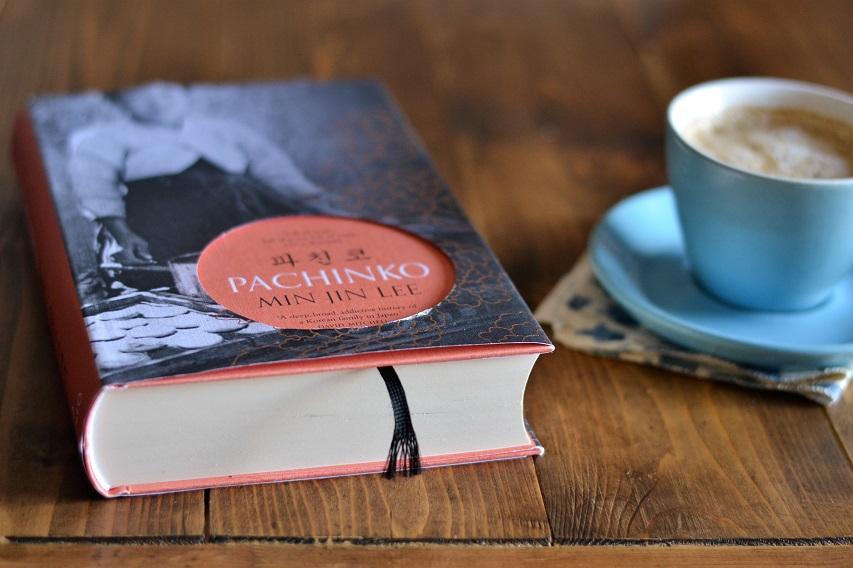“Pachinko” by Min Jin Lee is a heart-wrenching but inspiring tale of hope, sacrifice and love. The story captures the acute struggles of immigrant Koreans living in Japan throughout the 20th century, spanning multiple generations of the protagonist, Sunja’s, family. The plot is slow at the beginning, opening in the idyllic calm of Sunja’s homeland Yeongdo, before the waves turn rough as Sunja is swept away to Japan to begin a new life under Japan’s discriminatory society.
Sunja and her family live as second-class citizens in the Korean ghetto of Osaka. Remarkably, Sunja remains steadfast and does not submit to despair as she is faced by challenges from all sides, from clashes with the Japanese police to war, poverty and death. She makes many sacrifices in order to feed her family, from defying traditional gender roles by selling kimchi at a stand to keeping secrets about who Noa’s father really is. “A woman’s lot is to suffer,” a mantra that the women in the novel often repeat to one another in painful acceptance of their situations, succinctly describes the hardship Sunja undergoes as she clings to every last bit of hope.
As Sunja’s boys grow up, they begin to formulate their identity as Koreans living under oppressive Japanese rule and adopting Japanese names and customs, understanding that they are treated like filth simply because they originated from Korea, a place they have never even seen. Blood, honor and identity are tied closely together; blood is one of the reasons one of the characters desperately abandons his identity in favor of another one, straining his relationship with his family as a result.
Descending into the third generation, character flatness becomes a problem despite the fascinating lives that the third generation children lead. There are too many characters with compelling stories which could be developed further, but they are instead caught up in the action of the plot. Themes such as love and sex in the third gen’s teenage years emerge as they face a completely different Japan compared to Sunja, and these third generation teenagers are far more privileged thanks to the hard work of their parents and grandparents. While the previous part of the book dealt more with heavier topics such as war and poverty, I found this section’s underlying social commentary refreshing and more relatable as it speaks to identity struggles framed within a privileged adolescence. While their privilege takes them far, I was sufficiently satisfied with the ending as it was quite heartwarming, with a tinge of bittersweet disillusionment.
Overall, the style of the novel was very distinct and less frequently used by contemporary writers, so it took a while to get used to as it narrates events in a very broad scope. It’s almost as if the author is writing from the perspective of God looking down at events in the long term. This approach was mostly successful and illuminating as it is suited to tracing the lives of the many characters spanning three generations, but it does get a little overwhelming at times to trace the complex relationships from birth to childhood to adulthood to death of the characters. Still, “Pachinko” is definitely worth the read and will leave you deeply impacted.
REVIEW | "Pachinko"
March 16, 2018
0
Tags:
More to Discover


![[PHOTO COURTESY OF GOODREADS]](https://blueandgoldonline.org/wp-content/uploads/2025/09/Untitled-design-1-e1759063850793-1200x466.png)
![[PHOTO COURTESY OF PENGUIN RANDOM HOUSE, PENGUIN BOOKS, PENGUIN BOOKSHOP]](https://blueandgoldonline.org/wp-content/uploads/2025/05/books-1200x675.png)
![[PHOTO COURTESY OF ARTE PUBLICO PRESS, SECKER & WARBURG, HOUGHTON MIFFLIN HARCOURT]](https://blueandgoldonline.org/wp-content/uploads/2025/01/Untitled-design.png-1200x609.jpeg)
![[PHOTO COURTESY OF SIMON & SCHUSTER]](https://blueandgoldonline.org/wp-content/uploads/2025/01/IMG_2863-773x1200.jpeg)
![[PHOTO COURTESY OF PENGUIN BOOKS AUSTRALIA]](https://blueandgoldonline.org/wp-content/uploads/2025/01/IMG_2862-767x1200.jpeg)
![[PHOTO COURTESY OF PENGUIN BOOKS LIMITED]](https://blueandgoldonline.org/wp-content/uploads/2025/01/IMG_2864-862x1200.jpeg)
![[PHOTO COURTESY OF WARNER BROS.]](https://blueandgoldonline.org/wp-content/uploads/2025/09/SPRMAN_Character_Art_Superman_Instavert_1638x2048_DOM-960x1200.webp)
![[PHOTO COURTESY OF SCOTT YAMANO]](https://blueandgoldonline.org/wp-content/uploads/2025/09/e608ae29-be1a-4440-9730-acb2d1438555_7200x4800-1200x800.jpg)
![[PHOTO COURTESY OF APPLE TV+]](https://blueandgoldonline.org/wp-content/uploads/2025/09/rev-1-F1-FPJK-0009_High_Res_JPEG-1200x633.webp)
![A large "Coulda Been Love" sign in front of the show set. [PHOTO COURTESY OF DRUSKI'S COULDA BEEN LOVE SHOW]](https://blueandgoldonline.org/wp-content/uploads/2025/05/IMG_1877-1200x678.jpeg)
![[PHOTO COURTESY OF IMDB]](https://blueandgoldonline.org/wp-content/uploads/2025/05/Untitled-design-2.png)
![[PHOTO COURTESY OF IMDB]](https://blueandgoldonline.org/wp-content/uploads/2025/05/MV5BY2UwOGUxMzEtMzEyZi00NjEwLTkxOTMtYTljOWEzYjYyMWNjXkEyXkFqcGc@._V1_-810x1200.jpg)